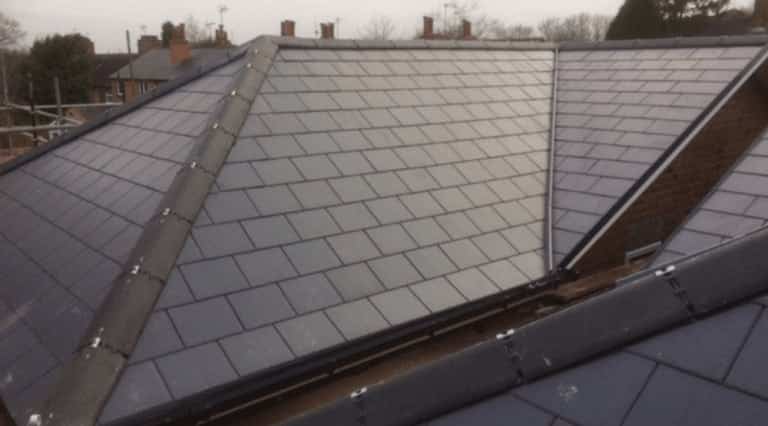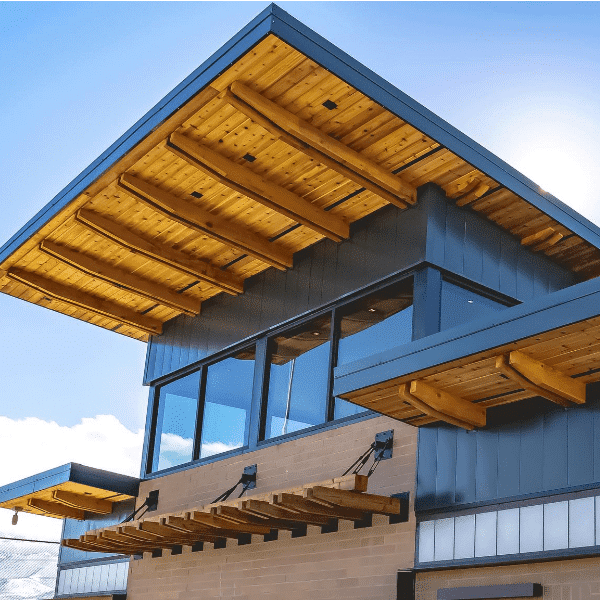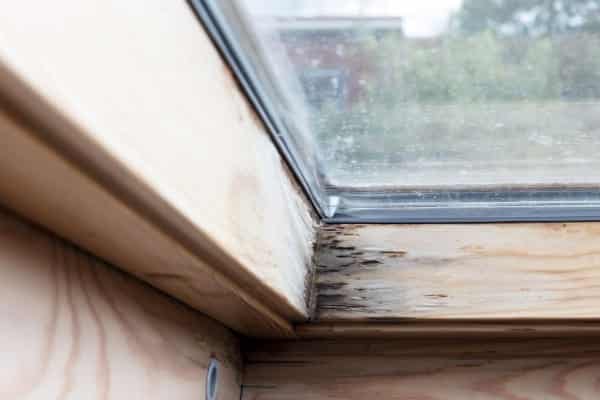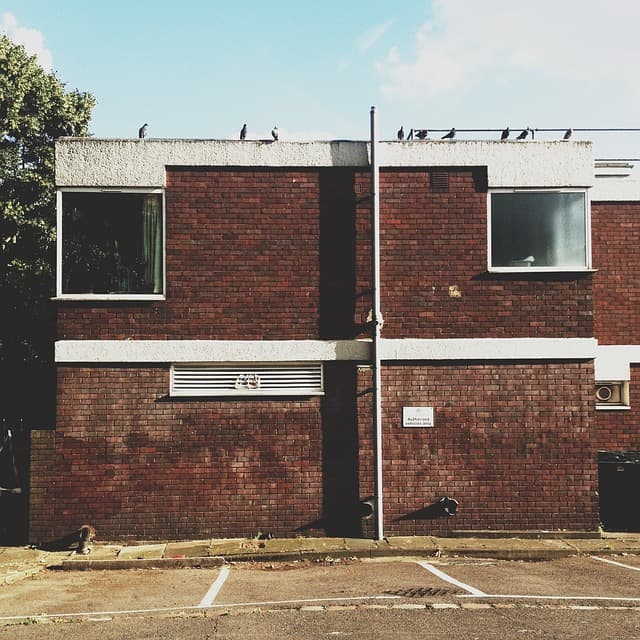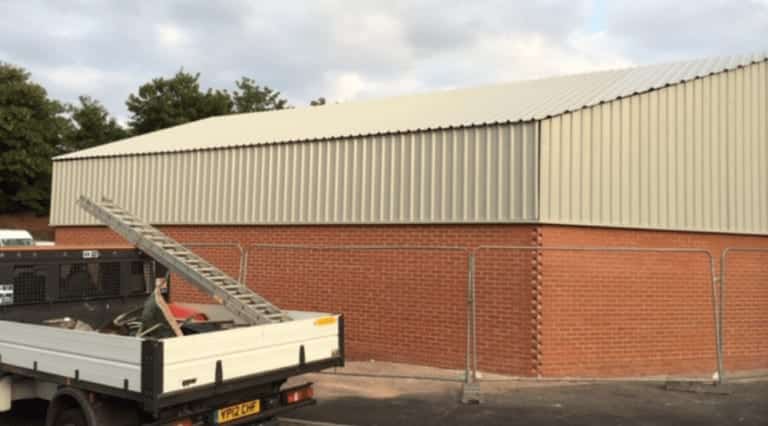Find My Local Expert The Importance of Gutter and Roof...
Read More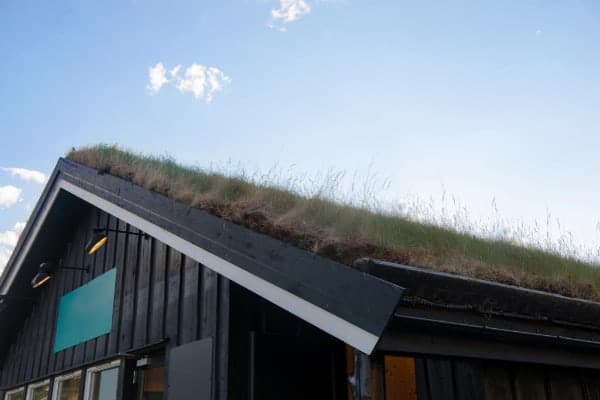
Am I Allowed to Install Green Roofing in the UK?
Also known as an eco-roof, or vegetative roof, green roofing is a layer of vegetation planted on a flat or sloped roof, and one that is growing in popularity for several reasons, many to do with sustainability and carbon reduction. The basic construction of a green roof involves extensive waterproofing and drainage systems to protect the underlying property, a substrate for your vegetation to grow in, and the vegetation itself.
Green roofs can come in three main flavours, even if there is no definite point of distinction between the three. These flavours are extensive, intensive, and semi-intensive. Extensive roofs require the lowest maintenance, with the trade-off being they are not particularly inspiring to look at. Of course, this isn’t a problem in most situations as extensive roofs are most often used for out-of-the-way places, such as the roofs of tall buildings where access is extremely limited.
Intensive roofs will typically have much more variety in their vegetation, requiring more substantial substructures to support them, and more maintenance to keep them healthy. Of course, the benefit of all this is that intensive green roofing is far more attractive, which often leads to maintenance not being a problem. If your roof has a picturesque garden on it, you’re less likely to complain about having to water the flowers occasionally. And, of course, a semi-intensive roof is somewhere in between the two.
Why Have Green Roofing?
The first and foremost reason to install green roofing is the positive impact it has on the environment. Every square inch of vegetation works tirelessly to capture carbon in the atmosphere, helping reduce the global warming effect that too much carbon can cause. And every time we put up a building or parking lot, we reduce the planet’s capacity to absorb the carbon in our air.
Though an extensive green roof will not come anywhere near the impact that an equally sized patch of forest would, every little help, and with most scientists agreeing that man-made climate change is a significant threat, we should all be looking to help where we can.
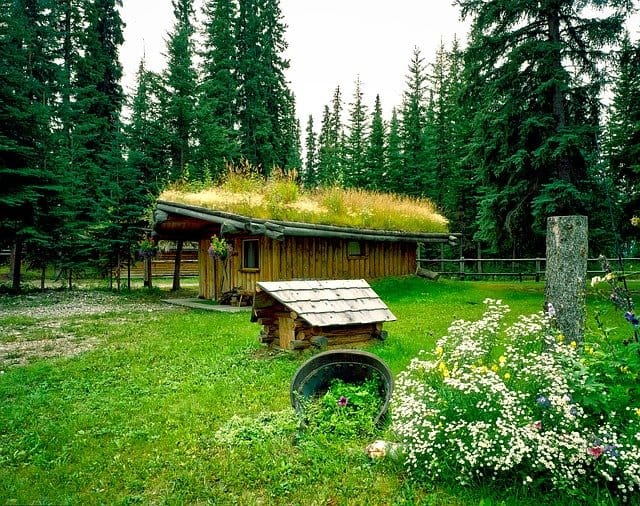
For buildings in urban areas, green roofing helps to reduce the urban heat island effect, whereby the clustering together of a large number of heat sources can cause any number of issues—both on the air quality in the urban environment and the climate surrounding it.
Of course, there are some not-so-altruistic reasons to go green with your roof. For one thing, a green roof often looks better than the alternative. In more practical stakes, green roofs offer much better insulation than a standard roof, which in turn can reduce air conditioning and heating costs. For businesses, green roofing can even serve as a morale booster, perhaps giving employees somewhere to take their breaks that is calm and a world away from the bustle of the streets below. For smaller green roofs, such as individual homes, it can represent a significant carbon footprint offset compared to the output of the home.
Is Green Roofing Available in the UK?
Though there is something of a primary focus on the London area, green roofing is very much available in the UK. Green roofing is often thought of as either something you would find on a tall building in an urban setting or on an eco-friendly house out in the middle of nature. Fortunately, green roofing has found a home on many types of buildings across the UK, from delivery depots to office blocks.
In fact, green roofing is often seen as a popular option once the benefits are fully explained. For example, the additional insulation properties alone make it a worthy addition in the UK, where the temperate climate tends to hover around the lower end of the thermometer. And, for those few days a year when the clouds part and the temperatures rise, green roofing can also help to keep the interior of the building cool.
To that end, there are plenty of consultants and specialists to choose from if you are thinking of getting a green roof installed on your UK property. We would definitely recommend hiring a professional since there are a lot of unseen complexities to a green roof that could lead to major property damage if not handled correctly.
Pros and Cons
It always helps to see the advantages and disadvantages of a thing laid out clearly, so that’s exactly what we’ve done. Here are the pros and cons of green roofing.
Pros – Improve Thermal Performance
We’ve already touched on this one, but green roofing does a great deal to improve the thermal qualities of a roof, which means better heat retention during colder weather, and a cooler interior during warmer weather. Both of these can keep the utility bills down.
Pros – Better Drainage
One of the less-expected consequences of global warming is flooding in urban areas as rainfall increases. Green roofing can help to mitigate this by absorbing some of that water in the soil and plants on the roof, preventing it from ever getting to the street or into urban sewers.
Pros – Improve the Lifespan of the Roof
The roof of a building is usually the part that receives the most abuse from the elements. Green roofing adds a substantial layer of protection against that abuse, greatly lengthening the life of the roof and reducing the need for repairs.
Pros – Helping the Environment
Reducing CO2 and the urban heat island effect, green roofing is perhaps one of the most passive ways we can help combat the damage we have done to our planet.
Cons – Expense
There is no getting around the additional expense of a green roof. You can offset some of that cost with the money you will save through making your building more efficient, but you are still looking at a more expensive roof to begin with.
Cons – Additional Maintenance
While the roof itself may require less maintenance due to the additional protection, the green part of a green roof does need maintenance. And, depending on the type of green roof, it may need a lot of maintaining.
How Much Does it Cost?
The cost of a green roof will vary depending on the type of roof and level of vegetation to be grown there, but we can say that the prices range from £50/m² for an extensive roof, to around £200/m² for an intensive one.
It should be noted that these average prices do not include any reinforcement work needed to make your roof into a suitable base for a green roof. Not all buildings need this, but many do.
Does it need maintenance?
Green roofs do need maintenance, that much is certain. As we’ve mentioned above, it is the degree of maintenance required that differs depending on the roof.
The three main areas of maintenance that a green roof will require are structural, irrigation, and the plants themselves. The plants require almost no maintenance if the roof is extensive, in much the same way that a wild field doesn’t need a gardener to come along and tend to it. If the roof is intensive, the plants will likely need tending to, however.
The irrigation side of things is integral in both wet and dry climates. In wet climates, it is important to ensure that the system flows properly and that you are not getting an excessive build-up of water on the roof. In dry climates, it is important to make sure that the roof gets enough water so that the plants growing there can thrive.
Structurally, there should be little regular maintenance necessary. However, regular inspections should be considered a must. Green roofs add quite a bit of additional load to a structure, and regular inspections will ensure that any developing problems are caught before they become a catastrophic incident.
Final Thoughts
Green roofs are just one of a large number of ways in which we can combat the negative effects that humanity has had on the planet in the last few centuries, but they are, perhaps, one of the most appealing. In urban areas particularly—where hints of nature are few and far between—green roofing can serve as a morale booster for the people living working there as much as it can act as a booster shot for the environment.
Granted, a single green roof is but a drop in the ocean when it comes to carbon sequestration, but many drops make an ocean, and if green roofing continues to grow in popularity, we could well see a time when urban areas are cooler, cleaner, and have less adverse effects on the surrounding ecologies.
The main thing to remember is that, with very few exceptions, every slab of concrete we lay, every building we erect, takes the space of some live-giving vegetation. We might not be able to make up for a car park’s-worth of forest with our rooftop gardens, but we can at least offset the damage. And, as we said before, every little bit helps.
You May Also Like...
Is Flat Roofing the Right Choice for Your Home?
Find My Local Expert Is Flat Roofing the Right Choice...
Read MoreHow to Spot a Leaking Roof Like a Pro
Find My Local Expert How to Spot a Leaking Roof...
Read MoreDo I need planning permission for a flat roof extension?
Find My Local Expert Do I Need Planning Permission for...
Read MoreCommercial Roofing: What You Need To Know
Find My Local Expert Commercial Roofing – What You Need...
Read MoreGo Green! Get Green Roofing Today
My Trusted Expert Guarantee
Experts Have Been Vetted & Approved
